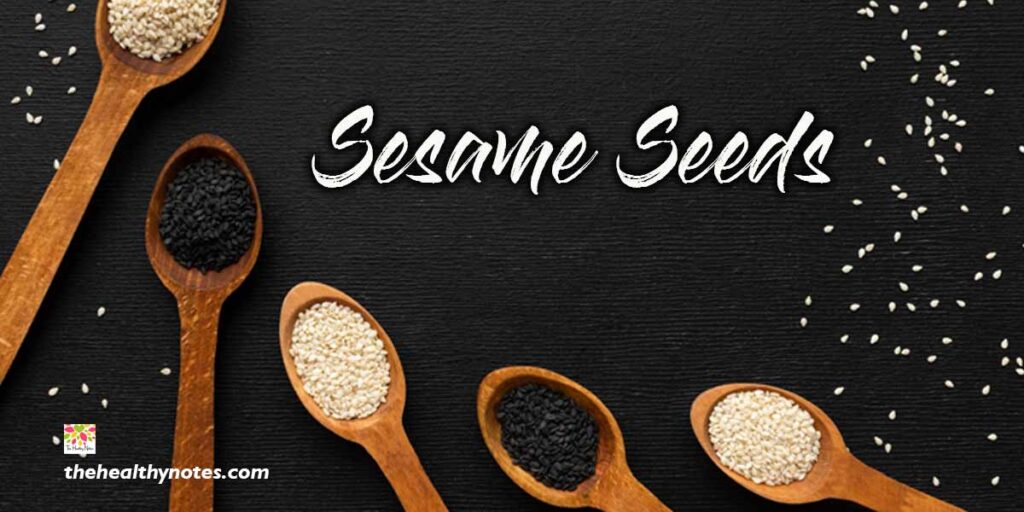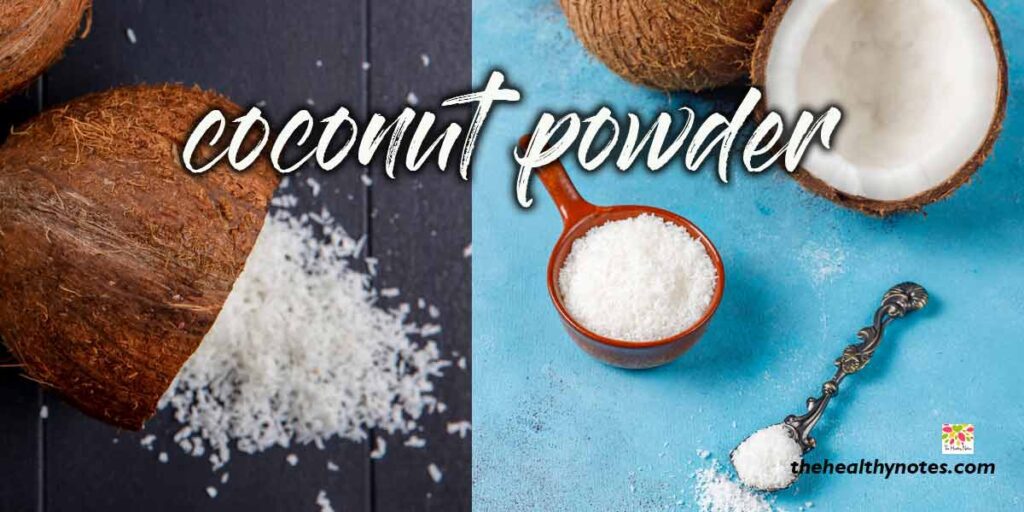
In this article, we’ll take a journey around the world to discover -where do sesame seeds come from? Their rich history, and their numerous culinary uses.
Yet, many people in the United States might be unfamiliar with their origin story. Let’s start our journey to know everything about sesame seeds.
Important
Approximately 1.1 million individuals in the United States are affected by sesame allergies, and among children who have other food allergies, 17% also have a sesame allergy.
Starting from January 1, 2023, federal regulations mandate that sesame must be clearly labeled as an allergen on packaged foods, including dietary supplements.
Sesame is now officially recognized as one of the nine major food allergens under federal law, joining the following:
Milk, Eggs, Fish (e.g., bass, flounder, cod), Crustacean shellfish (e.g., crab, lobster, shrimp), Tree nuts (e.g., almonds, walnuts, pecans), Peanuts, Wheat, Soybeans,Sesame
The Food and Agriculture Organization of the United Nations reports that, from 1994 to 2021, the following countries ranked among the top producers of sesame seeds:
Sudan, India, China, Myanmar, Tanzania, Nigeria, South Sudan, Ethiopia
Uganda
What are Sesame Seeds? Where do Sesame Seeds come from?
Sesame seeds are small, edible seeds that come from the flowering plant Sesamum indicum. These seeds are commonly used in cooking and baking, adding a unique nutty flavor and a crunchy texture to a variety of dishes. These are available in different colors, including white, brown, and black, with white sesame seeds being the most commonly used variety.
The Origin of Sesame Seeds
Sesame seeds, scientifically known as Sesamum indicum, are among the oldest cultivated plants in the world. Their history dates back thousands of years, with origins traced to regions in Africa and India. These tiny seeds come from the sesame plant, a flowering plant that belongs to the family Pedaliaceae. The plant produces pods containing these seeds, which are harvested for various purposes.
Cultivation
Sesame plants thrive in warm climates, making them well-suited for cultivation in countries with tropical or subtropical climates. Some of the major sesame-producing countries include India, China, Sudan, Myanmar, and Tanzania. India, in particular, is one of the largest producers of sesame seeds globally, with various states like Gujarat, Rajasthan, and Madhya Pradesh leading the production.
Harvesting and Processing
These seeds are typically harvested when the pods have matured and turned brown. The seeds are then removed from the pods and dried. Once dried, they can be processed in various ways to extract oil or kept whole for culinary use.

Sesame Seeds Uses
These seeds have played a crucial role in cuisines around the world for centuries. They are used as :
Baking:
These seeds are often sprinkled on top of bread, buns, and bagels, adding a delightful crunch and nutty flavor.
Tahini:
This creamy paste made from ground sesame seeds is a staple in Middle Eastern cuisine. Tahini is a key ingredient in hummus and various dressings, adding richness and flavor.
Asian Cuisine:
In Asian cuisines, sesame seeds are used in various forms. In Japan, they are ground into a paste called “goma” and used in sauces. In Korean cuisine, toasted sesame seeds are a common garnish, and sesame oil is used for its distinctive aroma.
Sweets:
These seeds are used in sweet treats like halva and sesame seed brittle, adding a delightful crunch and sweetness.
Condiments:
These seeds are a key ingredient in the popular condiment, sesame oil. It’s used not only for its rich flavor but also for its health benefits.
Nutrients Contained in One Spoon of Sesame Seeds
A one-tablespoon (9 grams) serving of these seeds contains the following approximate nutritional composition:
Calories: Around 50 calories.
Total Fat: Approximately 4.5 grams.
Saturated Fat: About 0.6 grams.
Monounsaturated Fat: Approximately 1.8 grams.
Polyunsaturated Fat: Approximately 1.6 grams.
Protein: About 1.6 grams.
Carbohydrates: Approximately 1.3 grams.
Dietary Fiber: Roughly 0.7 grams.
Sugars: Less than 0.1 grams.
Vitamins and Minerals:
Calcium: Approximately 88 milligrams (mg).
Iron: Roughly 1.3 mg.
Magnesium: About 32 mg.
Phosphorus: Approximately 50 mg.
Potassium: Roughly 40 mg.
Zinc: About 0.6 mg.
Other Nutrients:
Selenium: Trace amounts.
Vitamin B6: Trace amounts.
Folate: Trace amounts.
Vitamin E: Trace amounts.
These seeds are particularly known for being rich in healthy fats, especially monounsaturated and polyunsaturated fats. They are also a good source of various minerals like calcium, iron, magnesium, and phosphorus. Additionally, they contain beneficial compounds like antioxidants and phytosterols, which have potential health benefits. Incorporating these seeds into your diet can provide you with these essential nutrients and add flavor and texture to your meals.
12 Health Benefits of Sesame Seeds
These seeds are not only flavorful but also packed with nutrition. They are an excellent source of healthy fats, protein, fiber, and essential vitamins and minerals. Some potential health benefits include:
1. Rich in Nutrients: Sesame seeds are a nutrient-dense food, containing significant amounts of essential nutrients, including vitamins, minerals, and healthy fats. They are particularly high in calcium, magnesium, iron, and zinc.
2. Heart Health: Sesame seeds are a source of heart-healthy monounsaturated and polyunsaturated fats, including omega-6 fatty acids. These fats may help reduce the risk of cardiovascular disease by lowering LDL (“bad”) cholesterol levels.
3. Bone Health: These seeds are one of the best plant-based sources of calcium. Adequate calcium intake is essential for maintaining strong bones and preventing conditions like osteoporosis.
4. Antioxidants: These seeds contain antioxidants, including sesamin and sesamolin. These compounds have been associated with reducing oxidative stress and inflammation in the body, potentially lowering the risk of chronic diseases.
5. Blood Pressure: The magnesium content in sesame seeds may help regulate blood pressure by promoting the relaxation of blood vessels and reducing hypertension.
6. Digestive Health: These seeds are a good source of dietary fiber, which supports healthy digestion and regular bowel movements. Fiber also helps prevent constipation.
7. Blood Sugar Control: Some studies suggest that sesame seeds may help improve blood sugar control, making them potentially beneficial for individuals with diabetes. The fiber and healthy fats in sesame seeds may contribute to this effect.
8. Skin Health: The zinc content in sesame seeds is essential for maintaining healthy skin. It plays a role in wound healing, skin regeneration, and overall skin health.
9. Reduced Inflammation: These seeds contain anti-inflammatory compounds that may help reduce inflammation in the body, potentially benefiting individuals with inflammatory conditions.
10. Weight Management: The fiber and healthy fats in sesame seeds can promote a feeling of fullness and help control appetite, which may aid in weight management.
11. Cancer Prevention: Some studies have suggested that compounds in these seeds, such as lignans, may have anti-cancer properties and potentially reduce the risk of certain types of cancer.
12. Improved Nutrient Absorption: Sesame seeds contain phytosterols, compounds that may improve the absorption of certain nutrients, including beta-carotene and vitamin E.
Where Do Sesame Seeds Come From?Conclusion:
Sesame seeds, once a hidden treasure of ancient culinary traditions, have now found their way into households across the United States and around the world. As you sprinkle sesame seeds on your salads, enjoy a sesame-crusted salmon, or savor the nutty goodness of tahini, take a moment to appreciate the rich history and global journey of these tiny, flavorful seeds. These seeds not only enhance the taste of your dishes but also bring a wealth of nutrition and health benefits to your table. So, the next time you enjoy a sesame-infused meal, you’ll know exactly where those little seeds come from and the story they carry with them.
FAQs:
What is sesame oil, and how is it made?
Sesame oil is an edible oil extracted from sesame seeds. It can be made using various methods, including cold-pressing (which retains more of the seed’s natural flavor) or through heat and chemical extraction (which yields a lighter, milder oil).
Are there any cultural or religious significance to sesame seeds?
These seeds hold cultural and religious significance in various parts of the world. In some cultures, they are used in traditional rituals and celebrations. For example, sesame seeds are often used in Jewish cuisine during holidays like Passover.
Can sesame seeds cause allergies?
Yes, these seed allergies are becoming increasingly common. People with sesame seed allergies should avoid consuming sesame products and carefully check food labels for sesame ingredients.
How should sesame seeds be stored?
To maintain freshness, store these seeds in an airtight container in a cool, dry place, away from direct sunlight.
Are there different types of sesame seeds?
Yes, there are several varieties of these seeds, including white sesame seeds (hulled), black sesame seeds, and brown sesame seeds. The color and flavor can vary slightly among these varieties.
How are sesame seeds used in cooking?
These seeds are used in various culinary applications. They can be sprinkled on bread, buns, and bagels, added to salads, used to make tahini (sesame paste), and incorporated into sauces, dressings, and sweets.
What do sesame seeds taste like?
These seeds have a mild, nutty flavor with a slight hint of sweetness. The taste can vary depending on whether the seeds are raw or roasted.


4 thoughts on “Where Do Sesame Seeds Come From?- Unraveling everything”